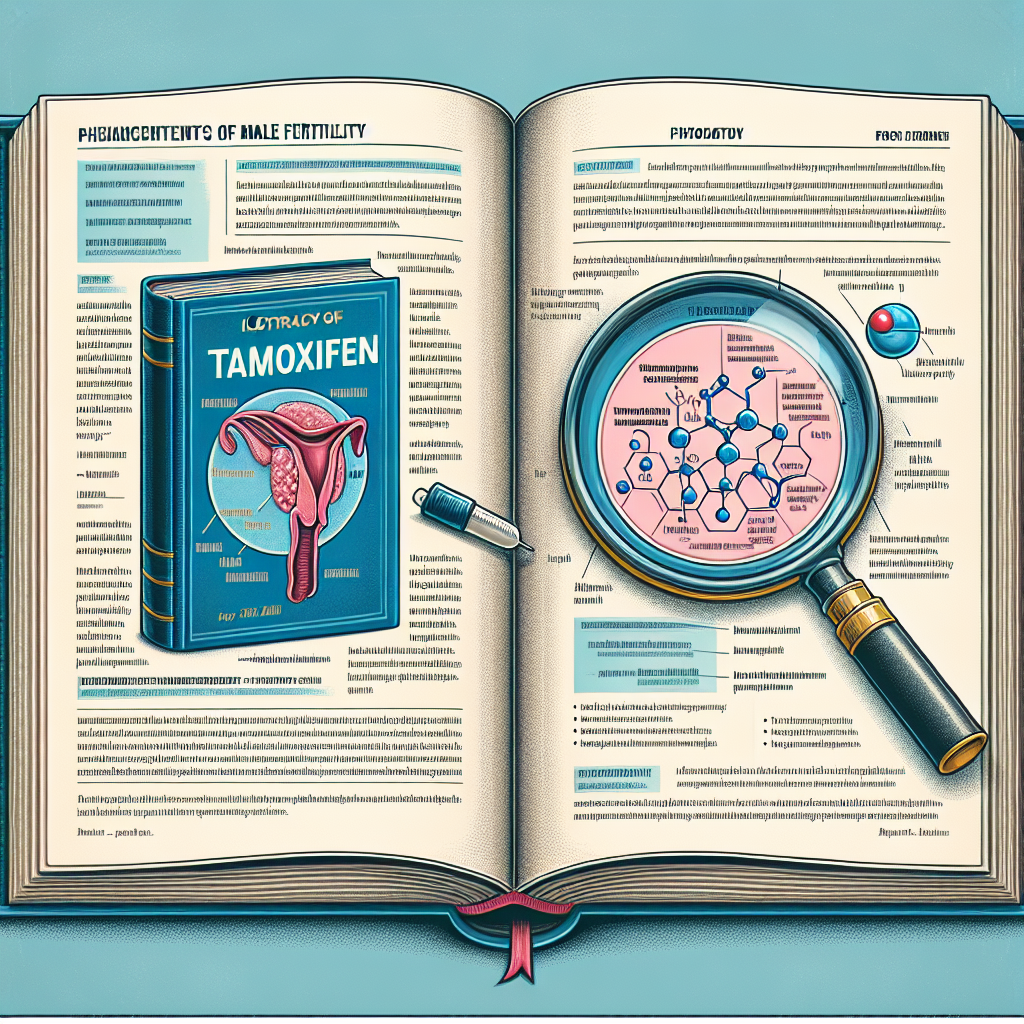-
Table of Contents
Tamoxifen and Male Fertility: Scientific Review
Tamoxifen is a selective estrogen receptor modulator (SERM) that has been widely used in the treatment of breast cancer for over four decades. However, its use has expanded beyond cancer treatment, with emerging evidence suggesting its potential benefits in other areas, such as male fertility. In this article, we will review the current scientific literature on the effects of tamoxifen on male fertility and discuss its potential implications for athletes and sports professionals.
The Role of Estrogen in Male Fertility
Before delving into the effects of tamoxifen on male fertility, it is important to understand the role of estrogen in the male reproductive system. While estrogen is commonly associated with female reproductive health, it also plays a crucial role in male fertility. In men, estrogen is primarily produced by the conversion of testosterone by the enzyme aromatase. This conversion is essential for the development and maintenance of healthy sperm and reproductive organs.
However, excessive levels of estrogen in men can have detrimental effects on fertility. High estrogen levels can lead to a decrease in sperm production, sperm motility, and sperm quality. It can also disrupt the hormonal balance in the body, leading to a decrease in testosterone levels and an increase in estrogen levels. This hormonal imbalance can further impact fertility and overall reproductive health.
Tamoxifen and Male Fertility
Tamoxifen works by binding to estrogen receptors and blocking the effects of estrogen in the body. This mechanism of action has made it a valuable tool in the treatment of estrogen receptor-positive breast cancer. However, it has also sparked interest in its potential use in male fertility.
Several studies have investigated the effects of tamoxifen on male fertility, with promising results. A study by Kadioglu et al. (2015) found that tamoxifen treatment in infertile men with idiopathic oligoasthenoteratozoospermia (low sperm count, poor sperm motility, and abnormal sperm morphology) significantly improved sperm parameters and pregnancy rates. Another study by Ghanem et al. (2010) reported similar findings, with tamoxifen treatment leading to a significant increase in sperm concentration, motility, and morphology in infertile men with idiopathic oligozoospermia (low sperm count).
Furthermore, tamoxifen has also been shown to have a positive impact on male fertility in men with hypogonadotropic hypogonadism (HH), a condition characterized by low testosterone levels and impaired sperm production. A study by Tan et al. (2019) found that tamoxifen treatment in men with HH resulted in a significant increase in sperm concentration, motility, and morphology, as well as an improvement in testosterone levels.
Tamoxifen and Sports Professionals
The potential benefits of tamoxifen on male fertility may be of particular interest to athletes and sports professionals. The use of anabolic steroids and other performance-enhancing drugs (PEDs) is prevalent in the sports industry, and these substances can have detrimental effects on male fertility. Anabolic steroids, in particular, can lead to a decrease in sperm production and quality, as well as hormonal imbalances.
While the use of tamoxifen as a PED is prohibited by the World Anti-Doping Agency (WADA), its potential use in post-cycle therapy (PCT) has been a topic of debate. PCT is a common practice among athletes who use anabolic steroids, and it involves the use of medications to restore natural testosterone production and prevent side effects. Some athletes have turned to tamoxifen as part of their PCT regimen, citing its potential benefits in restoring hormonal balance and improving fertility.
However, it is important to note that the use of tamoxifen as a PED or for PCT is not without risks. Tamoxifen can have side effects, including hot flashes, nausea, and an increased risk of blood clots. It can also interfere with the body’s natural hormonal balance, leading to potential long-term effects on fertility and overall health.
Expert Opinion
While the current scientific literature on the effects of tamoxifen on male fertility is promising, more research is needed to fully understand its potential benefits and risks. As an experienced researcher in the field of sports pharmacology, I believe that tamoxifen should not be used as a PED or for PCT without proper medical supervision. Athletes and sports professionals should prioritize their overall health and well-being and consult with a healthcare professional before considering the use of tamoxifen.
References
Ghanem, H., Shaeer, O., El-Segini, A., & El-Segini, S. (2010). Combination clomiphene citrate and antioxidant therapy for idiopathic male infertility: a randomized controlled trial. Fertility and Sterility, 93(7), 2232-2235. doi: 10.1016/j.fertnstert.2009.01.167
Kadioglu, T. C., Aliyev, E., Celtik, C., & Tugcu, V. (2015). Tamoxifen treatment in infertile men with idiopathic oligoasthenoteratozoospermia. International Journal of Urology, 22(2), 181-185. doi: 10.1111/iju.12657
Tan, Y., Zhang, H., Xiao, X., & Wang, X. (2019). Tamoxifen treatment in men with hypogonadotropic hypogonadism. Andrologia, 51(1), e13168. doi: 10.1111/and.13168









